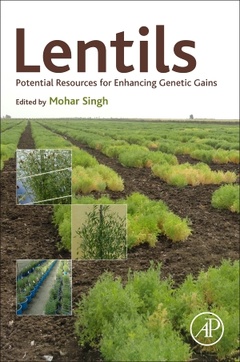Description
Lentils
Potential Resources for Enhancing Genetic Gains
Coordinator: Singh Mohar
Language: English
Subjects for Lentils:
245 p. · 15x22.8 cm · Paperback
Description
/li>Contents
/li>Readership
/li>Biography
/li>Comment
/li>
Lentils: Potential Resources for Enhancing Genetic Gains describes the evolutionary aspects and agronomic potential of this important pulse with emphasis placed on wide hybridization, including molecular aspects and future breeding strategies. The existing variability among cultivated germplasm has been exploited to reach a desirable level of productivity. However, to attain further breakthroughs in increasing yield and improving stability in future cultivars, new sources of genes/alleles need to be identified and incorporated into cultivated varieties. This book provides specific use information, including wild lentil germplasm utilization, thus allowing for the selection of transgressive interspecific recombinants that can be adapted to specific environments.
1. Introduction 2. Origin, distribution, and gene pools 3. Genetic resources: collection, conservation (in-situ and ex-situ), characterization and maintenance 4. Conventional cytogenetic manipulations 5. Embryo-rescue and cytogenetic manipulations 6. Gene pyramiding and multiple character breeding 7. Molecular marker –assisted gene pyramiding 8. Transferring multiple genes through backcross breeding 9. Transferring multiple characters through conventional multiple crossing 10. Genetic transformation 11. The impact of improvement research
- Identifies breeding resources and the agronomic value assessed for specific traits of interest
- Presents marker assisted breeding work and genomic resources
- Describes strategies for wild lentils using wide hybridization
- Features key breeding strategies




